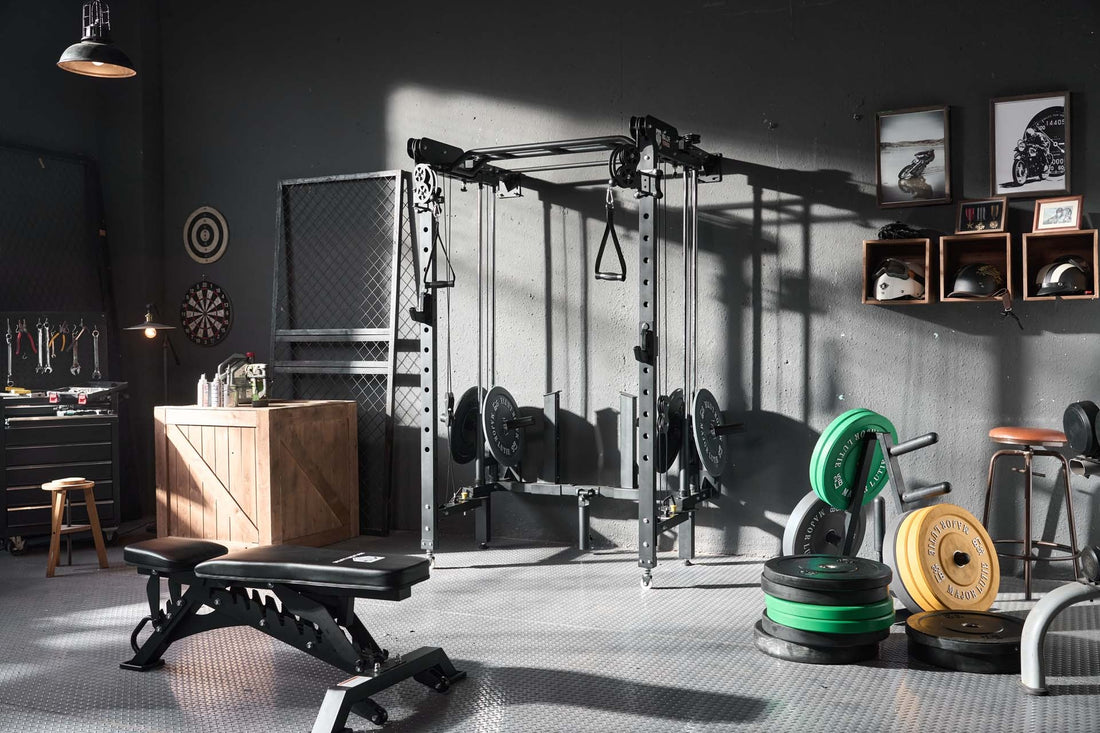
Setting up a home gym with a power rack can be a game-changer for your fitness journey, offering the flexibility to work out on your schedule. However, before you start assembling your gym, a critical question to address is: 'How much space do I need around my power rack?' This article delves into the spatial requirements for your power rack setup, ensuring you have enough room not only to perform a wide range of exercises safely but also to maximize the functionality of your gym equipment.
Understanding Power Rack Dimensions
The first step in determining how much space you need is to consider the dimensions of the power rack itself. Power racks vary significantly in size, with compact models starting around 48x48 inches and larger ones extending up to 50x60 inches or more. Additionally, the height can range from 80 to 95 inches, affecting the space you'll need for overhead exercises.
Minimum Space Requirements
At a minimum, it's recommended to have at least 2 feet of clear space on all sides of the rack. This allows for safe entry and exit and provides sufficient room for basic exercises. However, specific workouts may require more space. For instance, exercises like barbell squats or overhead presses necessitate a larger range of motion, potentially increasing the spatial requirement to 3-4 feet on the sides or in front of the rack.
Accommodating Accessories
When calculating the space for your power rack, don't forget to account for additional accessories that enhance functionality. Items such as weight plate holders, dip bars, or even an attached lat pull-down require extra space. For instance, if you plan to use a lat pull-down attachment, you may need an additional 1-2 feet of space behind the rack to comfortably perform these exercises.
Ceiling Height Considerations
Ceiling height is another crucial factor in setting up your home gym with a power rack. Ensure there's enough clearance above the rack, especially if you intend to do overhead exercises like presses or kipping pull-ups. A general rule of thumb is to have at least 15 inches of free space above the rack's highest point, although more space may be needed depending on your height and the specific exercises you plan to perform.

Optimizing Space for Safety and Efficiency
Beyond the minimum space requirements, it's important to consider ease of access and safety. Ensure there's ample room to move around the power rack without tripping over weights or other equipment. Additionally, think about the rack's placement in relation to walls and other pieces of furniture or gym equipment - maintaining a clear area around the power rack not only promotes a safe workout environment but also enhances your overall training experience.
Maximizing Your Home Gym Setup
Setting up a home gym with a power rack is an exciting step towards achieving your fitness goals. By understanding and respecting the space requirements for your power rack setup, you create a safe, efficient, and comfortable workout environment. Remember, the key to a successful home gym is not just maximizing the space available but also ensuring it's optimized for your workout needs. Happy lifting!



















